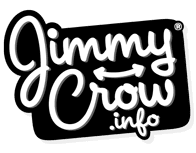The website structure is considered mostly a better navigation necessity rather than good SEO technique. But both the SEO pros and ace web developers are aware of just how much can a good website structure help in improving website ranking.
What Is Good Website Structure?
The website’s structure is mostly the setup of how the website is placed and how is it linked to the various subpages within. Think of it as an architectural structure, a complete layout and how each joint and corner is linked together.
A flatter website structure where most of the important content and the call to action are both on the top half of the page is considered a good website structure. Suppose the website promotes a service and one of the prospects are convinced they need to give this service a try. A CTA (call to action) on the top half of the page whether as an opt-in form or a link to their contact/email will dramatically improve their chances of taking action as opposed to the CTA being right at the bottom. Pages buried deeper in the website will often be ignored, especially by first-time users.
Need Of Coherent Website Structure?
Easy Navigation
Most people spend somewhere between 15-50 seconds on your website. And a lot of it has to do with ease-of-use. When a prospect chances upon a website that is a big jumble of pages, or if they have to keep descending lower and lower to search for information or the CTA button. They are not going to close the deal even if they are ready to buy. Because this searching around and confusion frustrates the user as they tend to lose their original orientation, resulting in abandoning the page altogether. And the more they are forced to descend the lower their likelihood of taking action gets.
In fact, easy navigation and usability are an important SEO factor in itself. The reason Google keeps coming up with different algorithm updates is because it takes its user’s experience very very seriously.
Like the Google Panda update was to skim the inferior website as per the quality bar and to ensure that their users are directed only to the cream. So when you structure your website to increase usability and make navigation easy, this in itself makes for good SEO.
Rank High In Search Engines
Besides the usability factor giving the ranking a boost, a well-structured website is an SEO technique not a lot of web developers take into account. Sure the SEO basics include a tweak here a tweak there, some optimized content, meta tags and voila! The website should now rank on the first page of Google.
Unfortunately, it’s not that easy. Fortunately, it’s not that difficult.
A well-planned SEO website structure will have a hierarchy that makes it easy for search engines to crawl them. That means the search engines will be able to index your website and hence they will rank better in search results.
The fundamental way to go about it is by drawing a hierarchy blueprint. What are your main sections that will be up on your home page and the subsections that go underneath each?
What information should be concentrated towards the bottom of the page and what should be done away with? Plus how your web pages would be linked to each other makes a huge impact too. It is also important to link to relevant pages (with respect to your homepage content) and ones with quality content. SEO experts agree on the fact that links within contents are more fertile than the ones on the side.
So it makes sense for a travel company to link to hotel deals your website offers. Or for a wedding planner’s website to direct their users to catering and other wedding services that you may provide.
What to keep in mind for a good website structure
- Always draw the hierarchy blueprint in the beginning.
- Keep URLs short and without extraneous characters. URLs that are messy, longer or contain special characters (Like * & !) are not crawled easily.
- Have all your important pages on the top part of the website.
While it is ubiquitously agreed upon that the Home page is the most important part of your website, your other web pages including the about us and specifically product pages also need to be optimized and should contain quality content.
- Opt for a combination of Static and Dynamic Homepage to introduce your readers to the latest products and blogs while keeping the main information intact.
- Your website structure should solve the primary purpose of your website. The call to action, whether it is to direct the user to the product page or make them sign up should be loud and clear.
Site structure is not the first SEO technique webmasters look at which is why they are often sidelined. But a good website structure can tremendously boost your SEO strategy and improve ranking.
source: keywordXP.com
